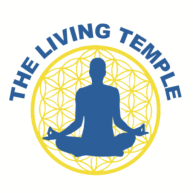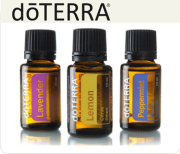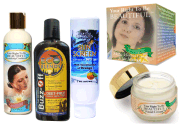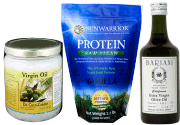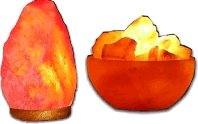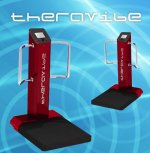Raw, Vegan and Vegetarian Lifestyles Their Impact on Your Health and Planet Earth
Awareness Magazine
March / April 2007
(download PDF)
By Robin Arthur Jones
Our lifestyles and diets not only have a profound impact on our own personal health but also on the whole planet on which we live, and a primarily raw and vegan diet is definitely the healthiest, not only for our bodies but planet earth as well!
For those not familiar with these lifestyles I would like to begin with a quick description. A Vegetarian diet can include eggs and dairy products although you sometimes hear people say they are vegetarian but still eat some chicken or fish, as if chicken or fish were some kind of vegetable?! A Vegan diet excludes all animal foods including honey and a Vegan lifestyle would also exclude anything made from an animal such as leather, wool, silk etc.
A Raw Food diet means eating only those foods that are not heat processed or cooked above a certain temperature which varies from 105 to 115 degrees depending on which raw food books or courses you have studied, but I think that under 110 degrees is a good general rule. A Raw Food diet could include raw meat, raw dairy and raw eggs, but after more than 12 years of research I personally believe the Raw Vegan diet to be the ultimate one for health.
Trying to decide on the best diet can be really confusing with people promoting very conflicting information from Atkins, Zone and Blood Type to Macrobiotic, Vegan and Raw, plus many people tell you that no diets work without supplements, while the medical establishment says we are all genetically screwed anyway and have to take drugs and vaccines to stay healthy.
So let’s look at what we are really designed to eat, what nutrients we actually need on a regular basis, and the best sources from which to get them.
Human beings are mammals and mammals fall into three basic categories, Carnivores – designed to eat mainly meat; Herbivores designed to eat mainly vegetation, and Omnivores – which can eat a variety of both animal and vegetable matter.
A perfect example of a carnivore is a cat which has razor sharp claws and teeth ideally designed for ripping apart prey. A perfect example of an herbivore is a horse which has the ideal anatomy for chewing up all kinds of vegetation. Humans fall under the Omnivore category which means we can consume animal foods, although it does not mean they are the best foods for us.
The Nutrients we need on a regular if not a daily basis to stay healthy are Minerals, Vitamins, Fats, Proteins and Fiber. There are other keys to good health such as staying Alkaline, Oxygenated, Hydrated, Stress Free, Chemical and Toxin Free.
The best source of Minerals for humans is vegetables, especially green plants such as sprouts, tender young greens, algae and sea vegetables, and the next best source is fruits. The best source for Vitamins is fruits, and in particular the less hybridized varieties and those with more pigment like berries, pomegranates etc. The best source for Fiber is leafy greens with grains being a second and less desirable choice for many reasons. The best and most healthy source of Fats is from nuts, seeds and fatty fruits like avocados and durians. With coconut oil and hemp seeds being two of the most beneficial!
Protein is the nutrient causing the most debate when it comes to diet! Firstly we need very little protein, no more than 5 to 10% of our total diet and remember that protein is simply amino acids which are abundant in all fruits, vegetables, nuts and seeds, and there are vegetable sources of so-called protein such as hemp seeds and soy.
Also many foods people think to substances and stimulants just of as protein such as meat, fish and dairy are in reality fat foods as they have a higher percentage of fat than protein, and if you are worried that you will become protein deficient on a Raw Vegan diet, just remember the biggest, strongest mammals on this planet are all Vegan such as the gorilla, elephant, and buffalo which consume no meat or dairy.
The human anatomy is ideally designed to gather fruits, succulent vegetation, nuts and seeds and consume them in their natural state. Two of the most un-natural food humans consume are animal flesh and grain and both of which cause an acidic reaction in the body and both of which for the most part have to be cooked, refined and processed before they become appealing to eat.
The more you cook, refine and process food, vegetarian or not, the more nutrients you lose and the more toxins you create. Proteins become denatured and unusable, minerals are lost, vitamins and fats become oxidized, fiber becomes less effective and all the enzymes and life force are destroyed. This leads to a whole host of health problems and also causes people to overeat and turn to substances and stimulants just to get through the day!
When it comes to the impact on our environment, raising animals for food is by far the most destructive and wasteful system. Here are just a few eye-opening statistics from Earthsave International. Over 80% of the corn and oats grown in the U.S. are fed to livestock; an acre can produce either 165 pounds of beef or 20,000 pounds of potatoes; it takes 50 times more fossil fuels to produce a meat-centered diet compared to meat-free diet; it takes 25 gallons of water to produce a pound of wheat, and 2500 gallons of water to produce a pound of meat!
In January 2007 the UN published a report on livestock and the environment with a stunning conclusion: “The livestock sector emerges as one of the top 2 or 3 most significant contributors to the most serious environmental problems at every scale from local to global.
Raising animals for food is a unusable, minerals are lost, vita- primary cause of land degradation, air pollution, water shortage, water pollution, loss of biodiversity, and not least of all, Global Warming!”
Raising crops such as corn, wheat and soy are far better for the planet than animal agriculture but are still not ideal as they often require forests to be cut down, and the crops must be replanted each year which involves the use of energy and fossil fuels and often uses many pesticides and herbicides. Many of these crops are now also genetically engineered which is not good for humanity despite what you may have heard from the mainstream controlled media!
The best way to achieve optimal health and to protect the health of the planet is to consume more foods from trees such as fruits and nuts which do not need to be replanted each year, help to hold the soil together and form a natural ecosystem with the planet and all its many lifeforms!
In conclusion if you want to do the best for your body and Planet Earth, you should divide your food groups into three sections: Optimal Foods – raw fruits, greens, nuts and seeds which should make up the main percentage of your diet; OK Foods – should be consumed sparingly, if at all, such as legumes, grains, meat and dairy; and Non Foods – which should be avoided completely, such as sodas, doughnuts, white bread, fast food, TV dinners, and most commercial candy bars and packaged snacks.
Now just in case you think trying to be healthy or environmentally friendly is boring or a real hassle, remember that as long as most of your diet and lifestyle consists of good things, you can still get away with some not-so-good things once in a while, and to that end I would like to leave you with the following quote. “Five days a week my Body is a Temple, the other two Days it’s an Amusement Park!”
Robin Arthur Jones has spent more than 12 years researching Health, Nutrition and Freethinking Information. He is the owner of The Living Temple in Huntington Beach’s Old World Village, where speakers on topics from Health and Nutrition to Ancient Civilizations and Spirituality are featured on a regular basis. He also has Movie Nights and Monthly Raw Food Festivals. For more details email Robin at thelivingtemple@earthlink.net or call (714) 891-5117.
